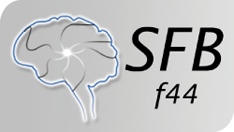Project:
Function of non-coding RNAs in neurodegenerative diseases
Alexander Hüttenhofer and Diana Scutelnic
Small non-protein-coding RNAs (ncRNAs) play important roles in the regulation of gene expression and have been implicated in various diseases of the central nervous system (CNS). Thereby, micoRNAs (miRNAs) represent a prominent and well-characterized class of small ncRNAs (sized about 21-23 nucleotides) mediating post-transcriptional control of their target mRNAs. In addition to miRNAs, a large number of short ncRNAs (sized from 18 – 500 nt) exist within cells, which are either poorly characterized or belong to other classes of known small ncRNAs (e.g. snRNAs, snoRNAs, tRNAs or piRNAs).
In the past funding period of the SFB, we have identified several small nucleolar RNAs (snoRNAs) whose expression was deregulated in a triple transgenic mouse model for Alzheimers disease (AD). While canonical snoRNAs modify ribosomal RNAs or snRNAs, respectively, in the nucleolus (i. e. by 2’-O methylation or pseudouridylation), the biological function of disease-related snoRNAs has not been revealed, up till now. Thus firstly, we will study the differential expression of human homologs of snoRNA candidates, identified in mouse brain, in human AD brain samples. To that end, we will first examine post-mortem brain samples of AD patient vs. controls and investigate differential expression of snoRNAs and other ncRNAs by RNAseq analysis.
We will also develop robust qPCR strategies to detect ncRNAs identified by above screen in human body fluids, such as cerebral spine fluid (CSF), or blood serum. Preliminary results in our lab have already demonstrated that many ncRNAs can be detected by qPCR within exosomes, derived from human CSF samples, and might therefore be useful as biomarkers for early diagnosis of neurodegenerative diseases. Thus, we aim to profile the expression pattern of the candidates of interest in AD patients vs. controls in CSF and will investigate their potential as diagnostic markers (in collaboration with the Humpel group).
In a second step, we plan to address the biological functions of ncRNAs involved in AD and other degenerative diseases such as MSA (collaboration with Stefanova/Wenning). To that end we will separate ncRNAs by high resolution sucrose or glycerol gradients and identify their protein composition by mass spectroscopy (MS). Since all biologically relevant known ncRNAs in eukaryal cells are reported to bind to one or several proteins, thus forming RNPs (ribonucleo-protein particles), the identification of protein binding partners of ncRNAs will aid in identification of their biological functions and their involvement in disease.
In a third project, in collaboration with the Singewald group, we will address the question of how expression of ncRNAs and their mRNA targets are regulated in the brain under physical exercise in a mouse model for depression (i. e. high anxiety mice, HAB mice). There is first evidence that repeated physical exercise exerts an anxiolytic-like effect in mice. Therefore, HAB mice will be subjected to repeated physical exercise and subsequently mitigation of anxiety-like behaviour will be tested using the elevated plus maze. Assuming that repeated physical exercise is associated with a decline in anxiety-like behaviour, expression profiling of ncRNAs and mRNA targets by RNAseq will be performed in brain regions of interest to investigate their regulatory networks.






